Best Of
22 Top Market Research Tools for Businesses [With Template]
Article written by Kate Williams
Content Marketer at SurveySparrow
22 min read
22 November 2024
![22 Top Market Research Tools for Businesses [With Template] 22 Top Market Research Tools for Businesses [With Template]](/_next/image/?url=https%3A%2F%2Fstatic.surveysparrow.com%2Fsite%2Fassets%2Ftemplates%2Fgrey-placeholder-v2.png&w=3840&q=70)
Market research is the cornerstone on which you build anything – be it a startup, product, or website. But you already know that which is why you are here.
You want to know how best you can do this. And more importantly – what’s the best market research tool.
Well, you have come to the right place. We will be discussing the top market research tools and some bonus platforms as well.
Let’s get to it.
22 Best Market Research Tools Platforms
15 market research tools will be discussed here in detail, and 6 others are listed as bonuses for you.
Now, it took us some time, but we have collated some of the best market research tools available in the market. We have included user reviews, prices, ratings, and more about each tool – for you.
Remember, what you read here is just a capsule version of the tools. Take initiative in looking more into the tools you like and choose the one that best fits your needs.
1. SurveySparrow
G2 Rating: 4.4 (5)
Suitable for: Startups, SMBs, and large businesses
Why choose SurveySparrow? Collect customer feedback across platforms and around the globe and analyze them to understand customer perceptions and needs.
By providing a robust platform for sharing surveys – SurveySparrow positions itself as one of the best market research tools. You can reach out to the target audience where they are (anywhere around the world) and collect feedback. With its UI being conversational, SurveySparrow has a history of getting 40% more responses than its counterparts.
Market Research Survey Template
Use This Template
Feedback collection isn’t the end. It’s analyzed in-depth to provide you with the most accurate customer (market) insights. You can learn the following (but not limited to this) –
- Emotions behind the feedback
- The most discussed topics
- Sentiment score (which you can use to benchmark with competitors)
User review about SurveySparrow:
“SurveySparrow enables users to create surveys for different purposes, such as market research, customer experience, etc. It has several types of survey formats already built into it. It is very easy to create and collect the participant’s opinions using this platform.” – SurveySparrow G2 profile.
Key Integrations: HubSpot, Zapier, Intercom
Free Version: Available
Free Trial: Available
Pricing: The tool offers multiple paid plans for businesses. The pricing starts from a meager $19 per month.
A personalized walkthrough by our experts. No strings attached!
2. HubSpot
G2 Rating: 4.4 (5)
Suitable for: Businesses of all sizes
Why choose it? It integrates various functions into a single platform for easy analysis and interpretation.
HubSpot, as you may know, is a platform that helps you with inbound marketing, sales, and customer service. Though this is the case, through its data collection and analytics capabilities, it can help with market research.

But what makes it a great market research tool is its Make My Persona tool. It lets you create a buyer persona, helping you understand who your target customers are. And, importantly, what your target market is. Therefore, before investing time and resources into building something, you can refer to the list to find the ideal customers.
User review about HubSpot:
“The [HubSpot’s] data points help me save time and money in market research, and document management helps me close business much faster.” – HubSpot Sales Hub G2 profile.
Key Integrations: SurveySparrow, Google Analytics
Free Version: Available
Free Trial: Available
Pricing: The starting price is only $15 per month, but this can increase drastically as you switch to higher plans.
3. Statista
G2 Rating: 4.2 (5)
Suitable for: Market researchers and analysts
Why choose it? It’s one of the most extensive sources for statistics and data.
If you have ever searched for detailed statistics (or related data), it’s possible that you have stumbled upon Statista. By providing detailed market statistics and data across niches and regions, it helps with market analysis.
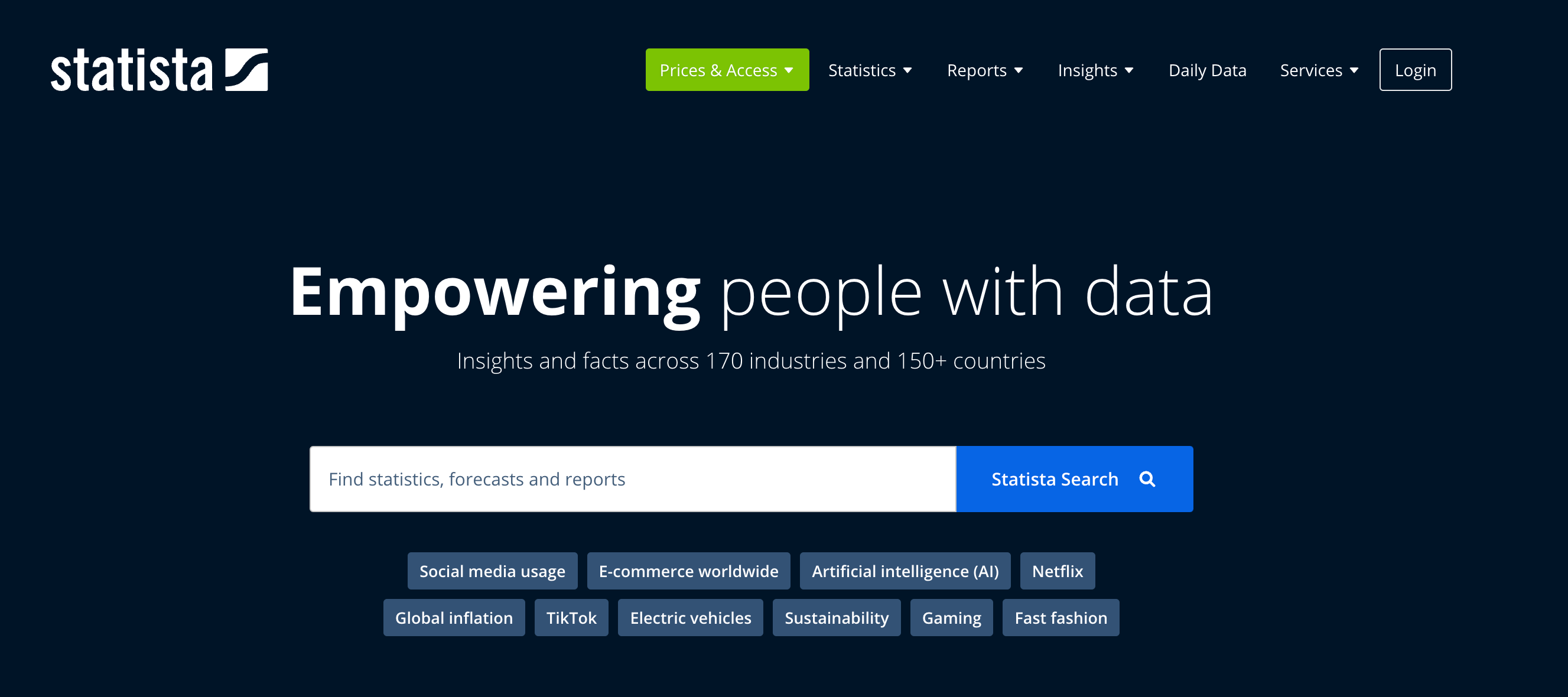
The data it offers is comprehensive and up-to-date. Apart from market analysis, it can be a good tool for benchmarking as well. You can download the reports as a PDF, Excel file, image, or presentation file. However, unlike other market research tools, Statista can be quite pricey.
User review about Statista:
“The best thing about Statista is that it has data, graphs, and relevant information. It also provides us with the source from which data was captured.” – Statista G2 profile.
Key Integrations: Nil
Free Version: Available
Free Trial: Available
Pricing: They charge $549 per month (annually) for their personal plan, which is the lowest-priced one.
4. SEMrush
G2 Rating: 4.5 (5)
Suitable for: Digital marketing agencies
Why choose it? It’s a great tool for getting a competitive edge and boosting online presence.
SEMrush is a digital marketing tool that helps you with SEO, PPC, and content marketing. From keyword research to competitor analysis – it offers insights into how the customers search and how the competitors cater to them.
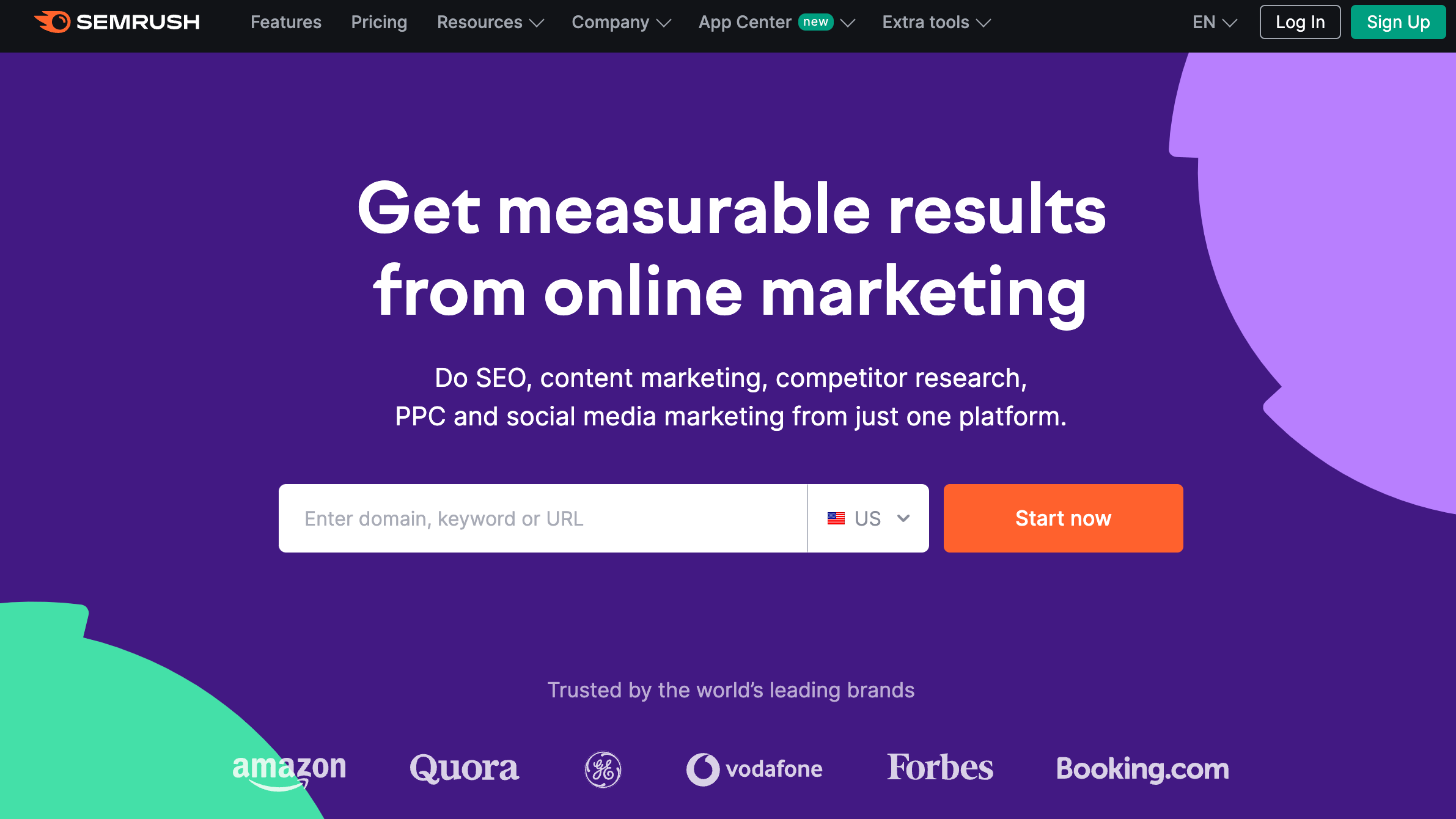
You can leverage the data and insights to create a strategic approach to make your product/services available to the target audience. Its backlink analysis lets you find new link-building opportunities and monitor existing ones. While it’s not an extensive one, it can be considered a good option among market research tools.
User review about SEMrush:
“SEMrush offers you a bundle of great features to go deeper into research to understand everything on how the competitors have done things better to help you to be far better than on the optimization front!” – SEMrush G2 profile.
Key Integrations: Google Analytics, Search Console, Zapier
Free Version: Available
Free Trial: Available
Pricing: The Guru plan (top-rated) starts at $208.33 per month (billed annually).
5. Think With Google
G2 Rating: Nil
Suitable for: Digital Marketing Agencies
Why choose it? The Insights and trends come directly from Google’s data set.
This is one of the free market research tools offered by Google. More than 90% of people use Google for primary search. Therefore, the customer behavior and tech usage data it offers can be top-class and highly beneficial.
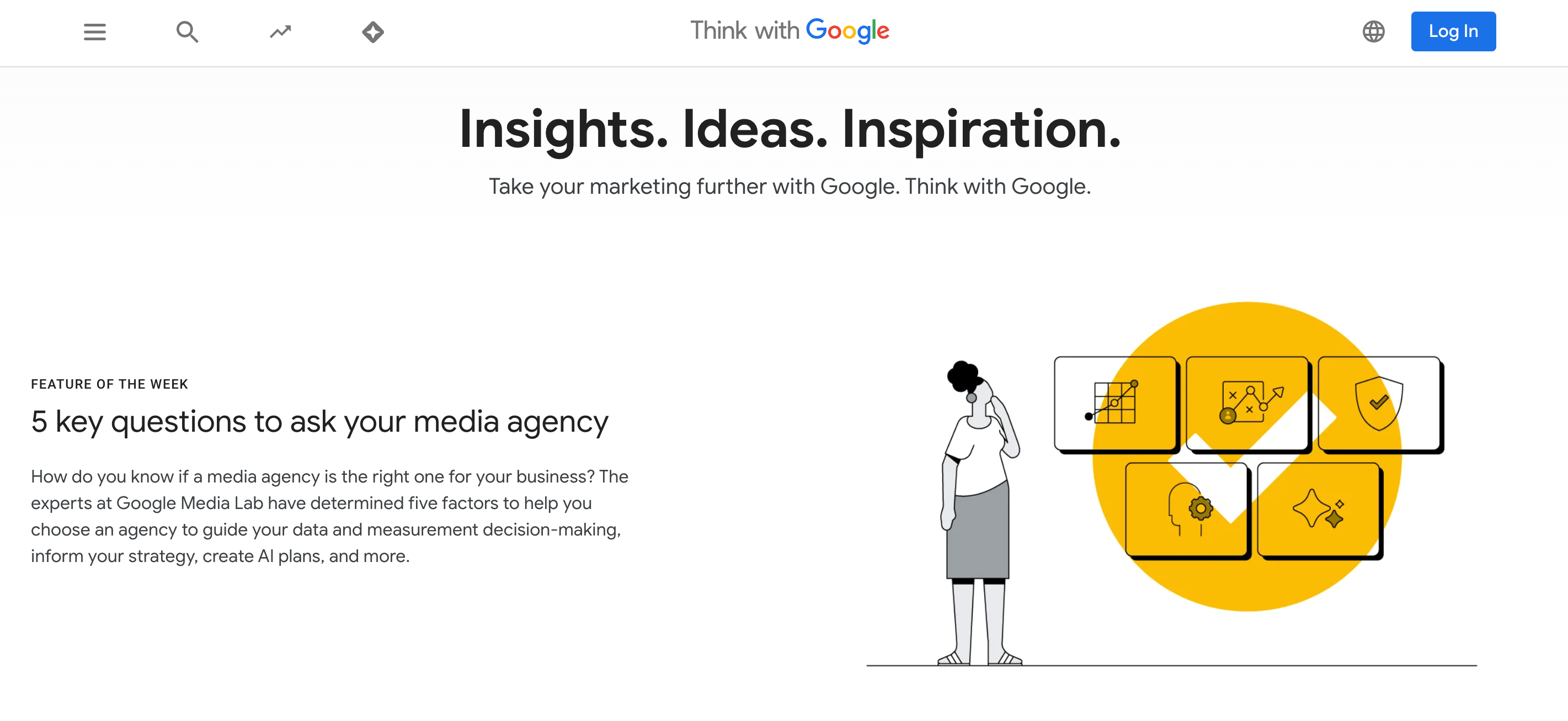
It offers tools like Market Finder and Consumer Barometer to understand market conditions and consumer trends. This can help optimize your strategies better and make you stand out in the marketplace.
Key Integrations: Nil
Pricing: It’s completely free!
6. Meltwater
G2 Rating: 4 / 5
Best For: Enterprises, SMB’s and Agencies
Why Choose it? Businesses often choose Meltwater as a market research tool for its comprehensive media monitoring capabilities, competitive intelligence insights, trend analysis features, crisis management support, and customizable reporting options.
With Meltwater, businesses can track brand mentions, analyze competitor activities, identify emerging trends, manage PR crises, and generate actionable insights tailored to their specific needs, helping them stay informed, competitive, and responsive in today’s dynamic market landscape.
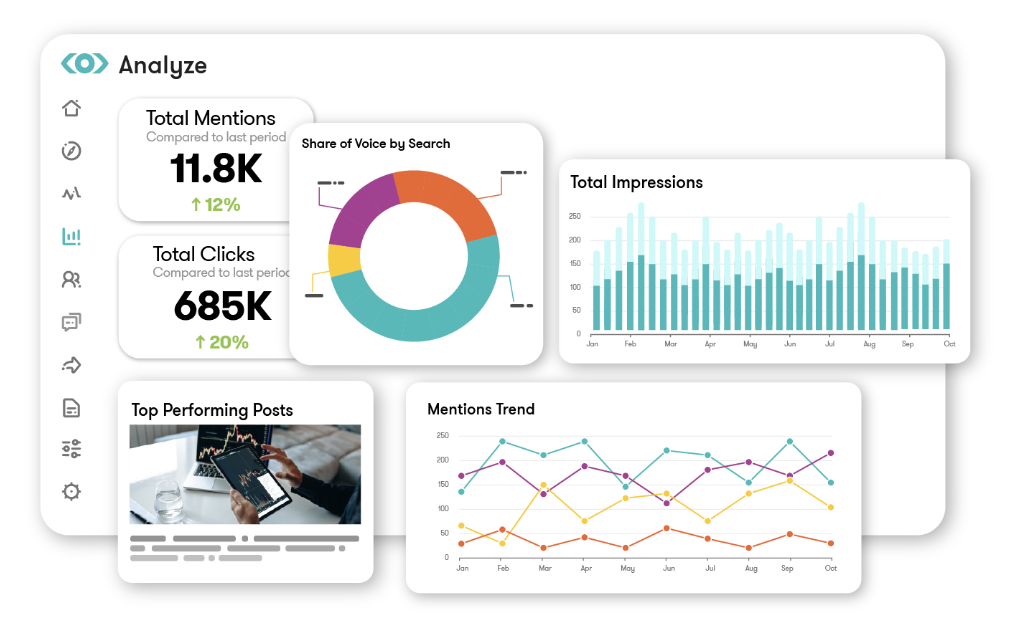
User Review about Meltwater:
“What stands out most about Meltwater is its social listening aspect. The wide range of tools and features help us with digital media monitoring and market research. From media tracking and social listening (which is what we use) to journalist outreach and influencer management. The social listening tool really picks up everything worldwide, which is helpful for our international business”
Free Trial: Not Available
Pricing : Custom
7. Glimpse
G2 Rating: 3.5 (5)
Suitable for: B2C and investing firms
Why choose it? It offers actionable insights to predict consumer behavior.
Unlike traditional market research tools, Glimpse doesn’t only focus on the existing set of data. It analyzes search, social media, and other data sources to identify emerging trends. Trends you will know even before they become mainstream.
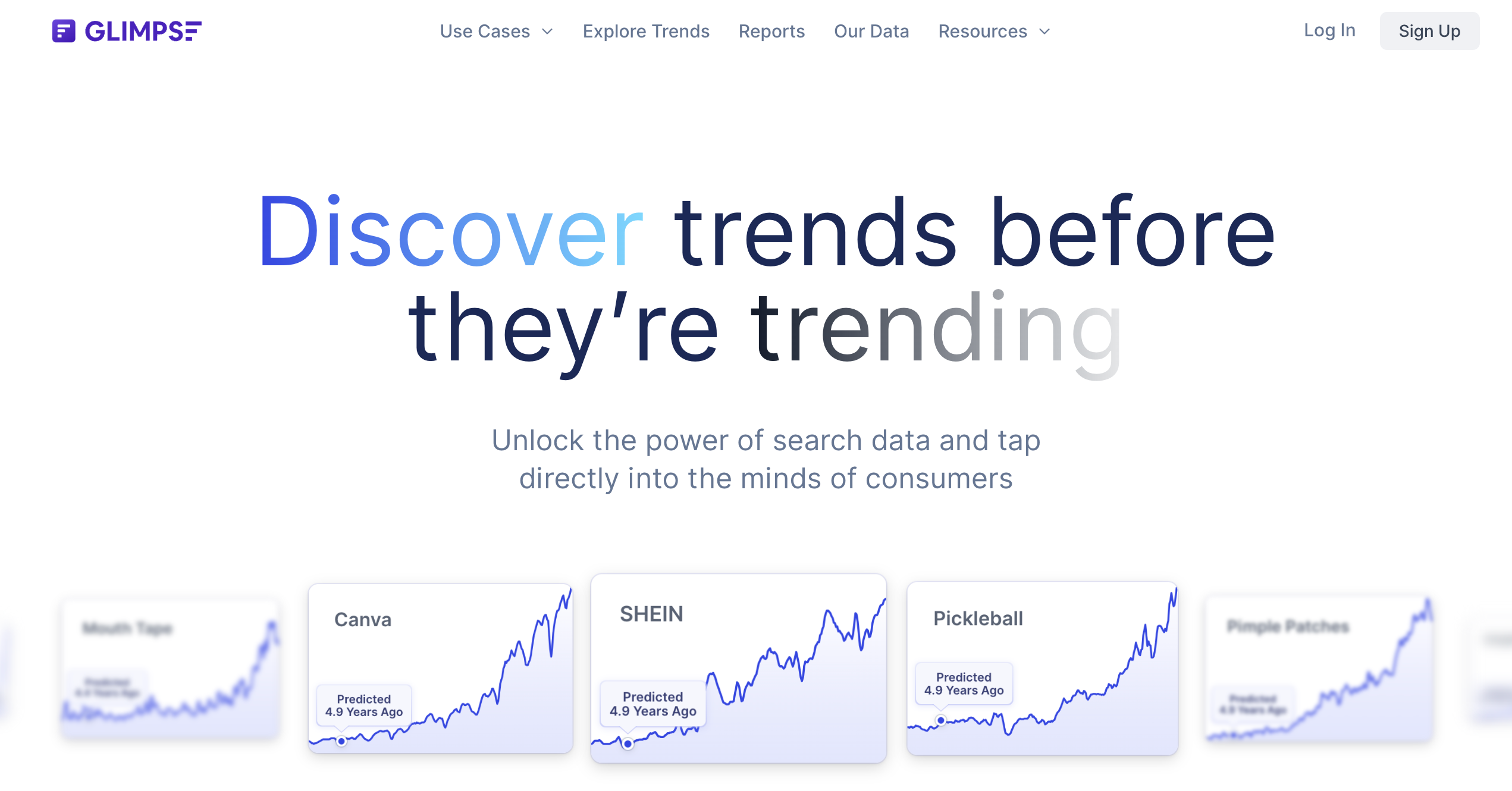
Being able to identify such trends early can be highly beneficial in capitalizing on new market opportunities.
User review about Glimpse:
“Glimpse offers actual numbers [search volume] behind the data to go along with the trends.” – Glimpse G2 profile.
Key Integrations: Nil Free Version: Available
Free Trial: Not Available
Pricing: The details of their paid plans are available upon request.
8. Attest
G2 Rating: 4.5 (5)
Suitable for: Businesses of any size
Why choose it? It offers reliable data and an easier way to conduct user research.
Attest is one of the top user research and market analysis tools in the market. It offers solutions like consumer profiling and market analysis to clearly understand the marketplace. You can create surveys to reach out, create personas, and more as the initial step.
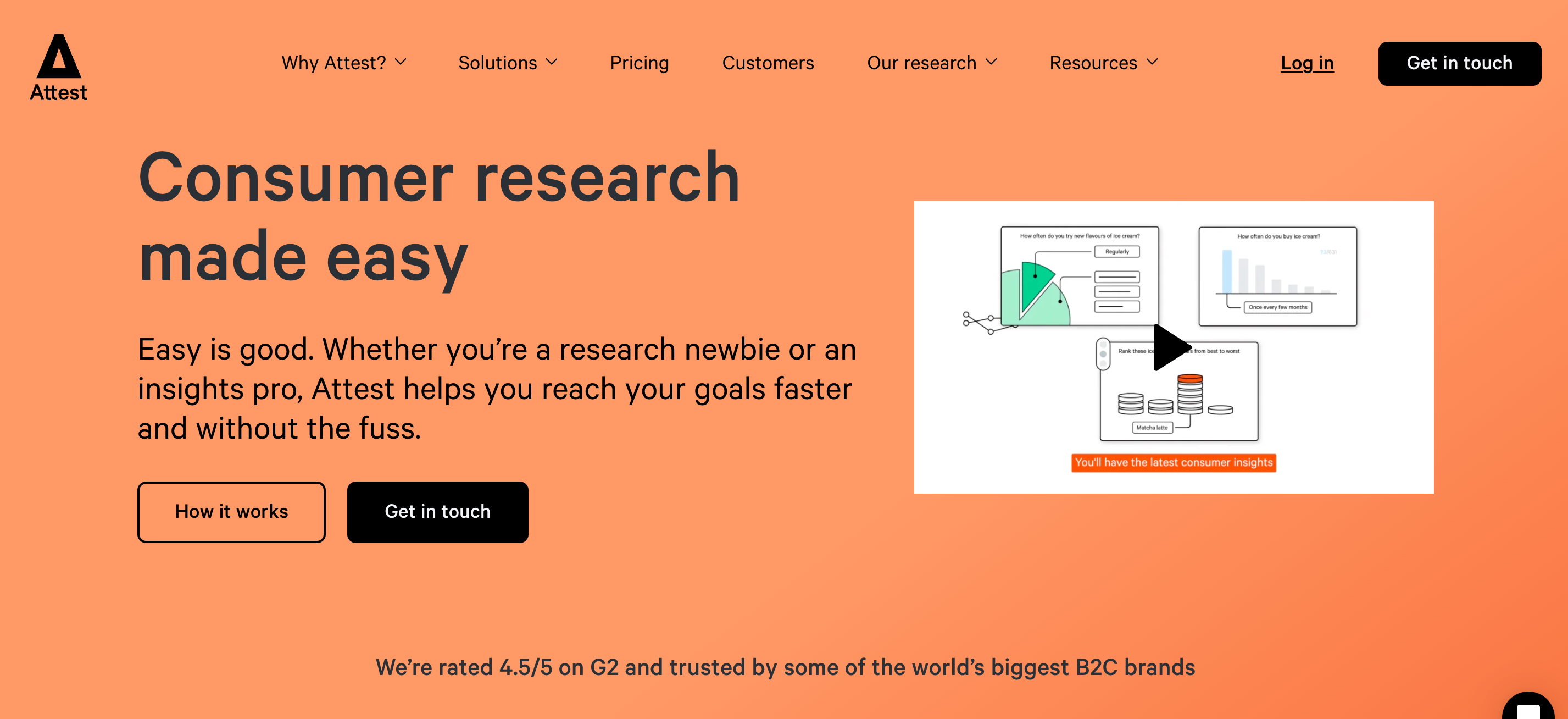
Once the data comes in, you can do further deep research that allows you to spot new market opportunities. It can do both quantitative and qualitative research and offer templates for the same.
User review about Attest:
“[Used Attest for] Market research to help us guide product decisions based on what our market needs from us.” – Attest G2 profile.
Key Integrations: Nil, though you can partner with them.
Free Version: Not Available
Free Trial: Not Available
Pricing: The details are available upon contact.
9. Browse AI
G2 Rating: 4.8 (5)
Suitable for: eCommerce and digital marketing agencies
Why choose it? You can automate repetitive tasks like data collection.
Browse AI is widely used to extract and monitor data from (any) websites. You can automate the data collection process from websites to
- Monitor market trends
- Track competitor activities
- Gather consumer feedback
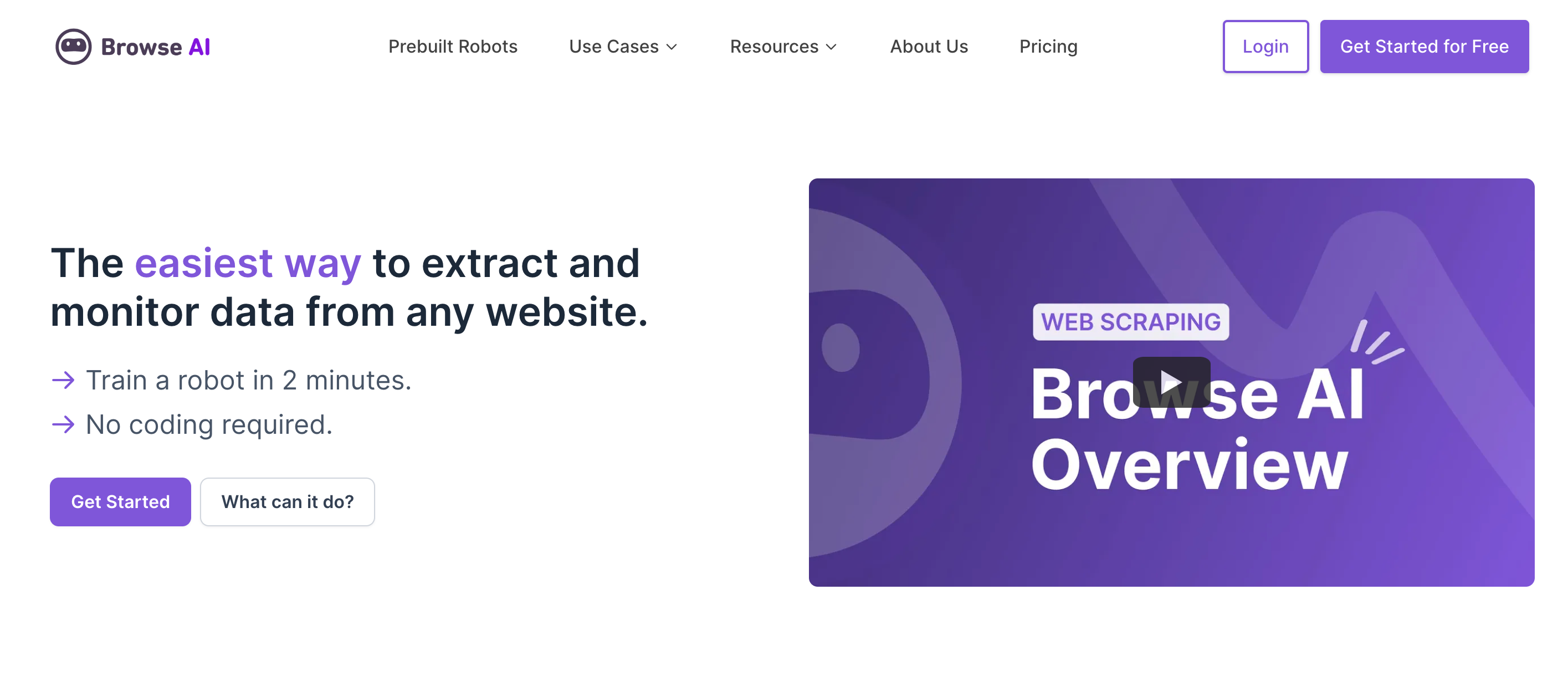
With browse AI, you can scrape data with no-code, schedule data extraction, and emulate customer interactions. This tool uses AI for efficient functioning. Follow the link if you want to learn about more market research tools that use AI.
User review about Browse AI:
“[Browse AI is] A dream tool for outreach and market research (1000s’ of $ & hours saved)” – Browse AI G2 profile.
Key Integrations: Google Sheet, Zapier, Airtable
Free Version: Available
Free Trial: Not Available
Pricing: They recommend using their Professional plan, which is $99 per month when billed annually.
10. Mention
G2 Rating: 4.3 (5)
Suitable for: Businesses of all sizes
Why choose it? Try it for its tracking capabilities across multiple channels.
Mention is actually a social media listening and brand monitoring tool. You might be wondering if that’s the case, how come it’s on the list of market research tools? Well, it can help you understand customer perception and emerging trends.
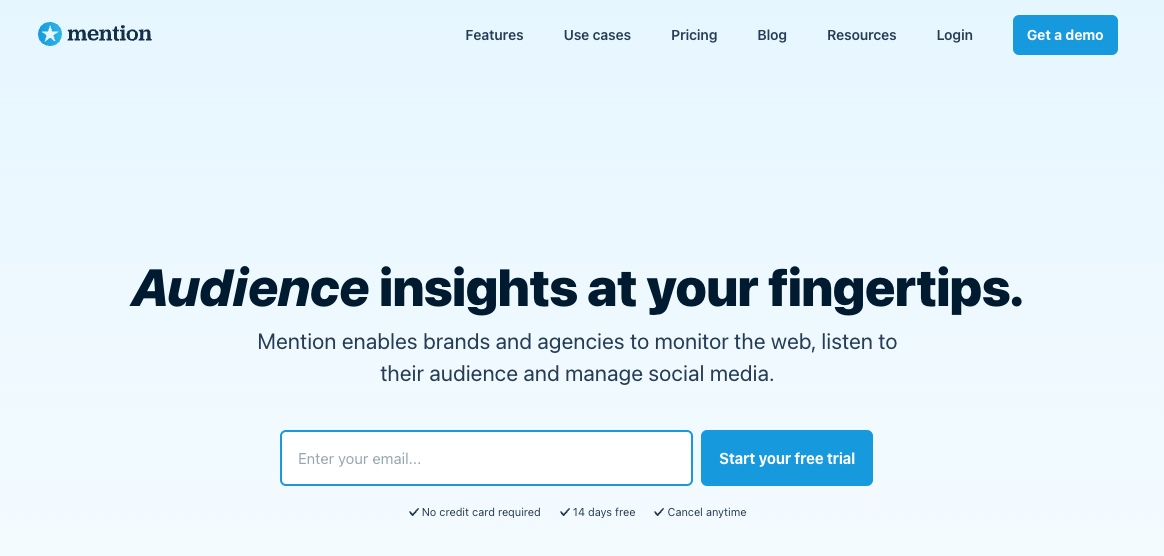
The tool can collect data about you, your competitors, and the industry from multiple channels. This can inform you about the current trends in the market, how your competitors are faring, and find new opportunities for growth.
As an additional benefit, Mention also helps you with influencer marketing – connecting with the right influencers and all.
User review about Mention:
“I used Mention for my research paper project, which was based on the CEO’s opinions in a very specific sector. It turned out to be extremely useful!” – Mention G2 profile.
Key Integrations: Social media platforms, Slack, Zapier
Free Version: Not Available
Free Trial: Not Available
Pricing: For one user, it charges $41 per month (when billed annually).

Explore Deeper Customer Insights with SurveySparrow
A personalized walkthrough by our experts. No strings attached!
11. Typeform
G2 Rating: 4.4 (5)
Suitable for: Large businesses
Why choose it? It’s good for collecting customer feedback data.
Typeform is an online form builder and a survey tool that can help with market research. It offers a range of survey types, which you can use to reach out to potential customers in the market. This way, you will get first-hand and reliable information directly from the customers.

Though not as conversational as SurveySparrow, its interface also helps increase response rates. You can also find a library of survey templates to boost the survey creation process.
User review about Typeform:
“We use Typeform for internal surveys, market research, customer research, interviews, etc.” – Typeform G2 profile.
Key Integrations: Excel, Intercom, Mailchimp
Free Version: Available
Free Trial: Available
Pricing: The starting price is $25 per month for 100 responses (billed annually).
NOTE: Paying $25 per month for a mere 100 responses can seem like a lost cause. This is one of the reasons why customers are constantly in the look for better alternatives to Typeform.
12. Market Explorer
G2 Rating: Nil
Suitable for: Startups and SMBs
Why choose it? It offers a macro view of potential markets, including growth forecasts and industry-specific trends.
We have discussed how SEMrush can be a great ally in market research. But what we didn’t discuss is Market Explorer – a dedicated market research tool from SEMrush. With Market Explorer, you can easily analyze any target market and identify industry leaders in terms of –
- Acquisition channels
- Traffic trends
- Audience demographics
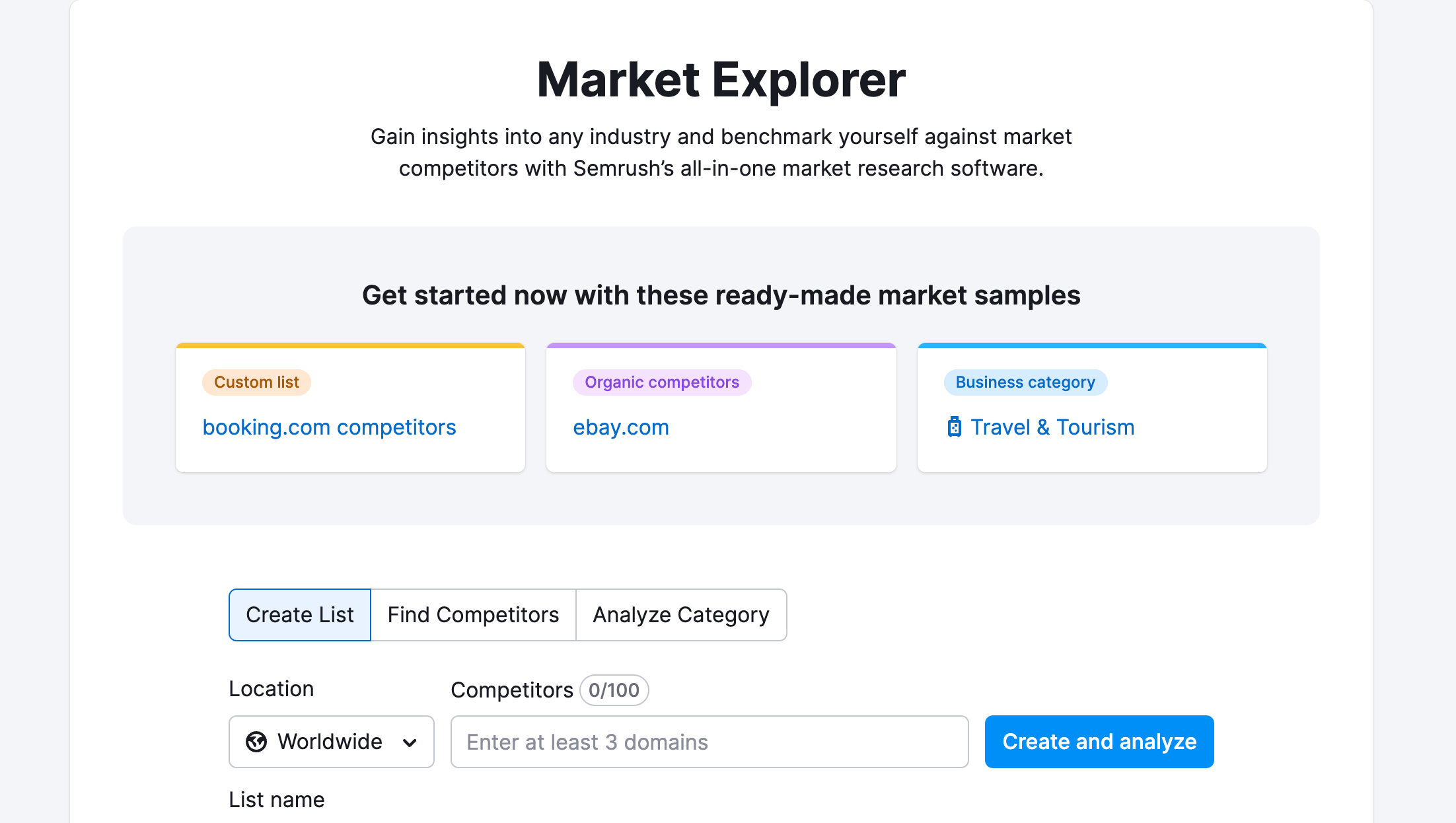
You can also customize the industry-wide market analysis through pre-set business categories in the tool. The tool also allows for historical data analysis to identify patterns and thereby predict trends.
User review about Market Explorer: Not Available
Key Integrations: All integrations of SEMrush
Free Version: Not Available
Free Trial: Not Available
Pricing: This is available as an add-on with an additional fee of $289 per month.
13. Consensus
G2 Rating: Nil
Suitable for: Startups
Why choose it? You can get reliable market research data that is easy to understand.
This is yet another AI tool for market research. It offers a search engine (powered by AI) to provide you with reliable study or research materials. Then again, you don’t have to go through all the research materials. The tool will offer concise and helpful content for that as well.

If you are worried about fact-checking, don’t be. It uses tools like Sciscore to ensure the reliability of the generated data.
User review about Consensus:
“A great tool that allows users to search for answers from scientific papers.” – Consensus Product Hunt profile.
Key Integrations: Nil
Free Version: Available
Free Trial: Not Available
Pricing: Premium is its most popular paid plan, with just $9.99 per month for one user.
14. Userlytics
G2 Rating: 4.4 (5)
Suitable for: UI/UX agencies and designers
Why choose it? To get actionable insights to improve your product’s overall performance.
Userlytics is one of the best-in-class tools for UI and UX research. The tool allows you to get qualitative data on your website, app, and even prototype. But what makes it a great research tool is its ability to identify usability issues and UX obstacles.
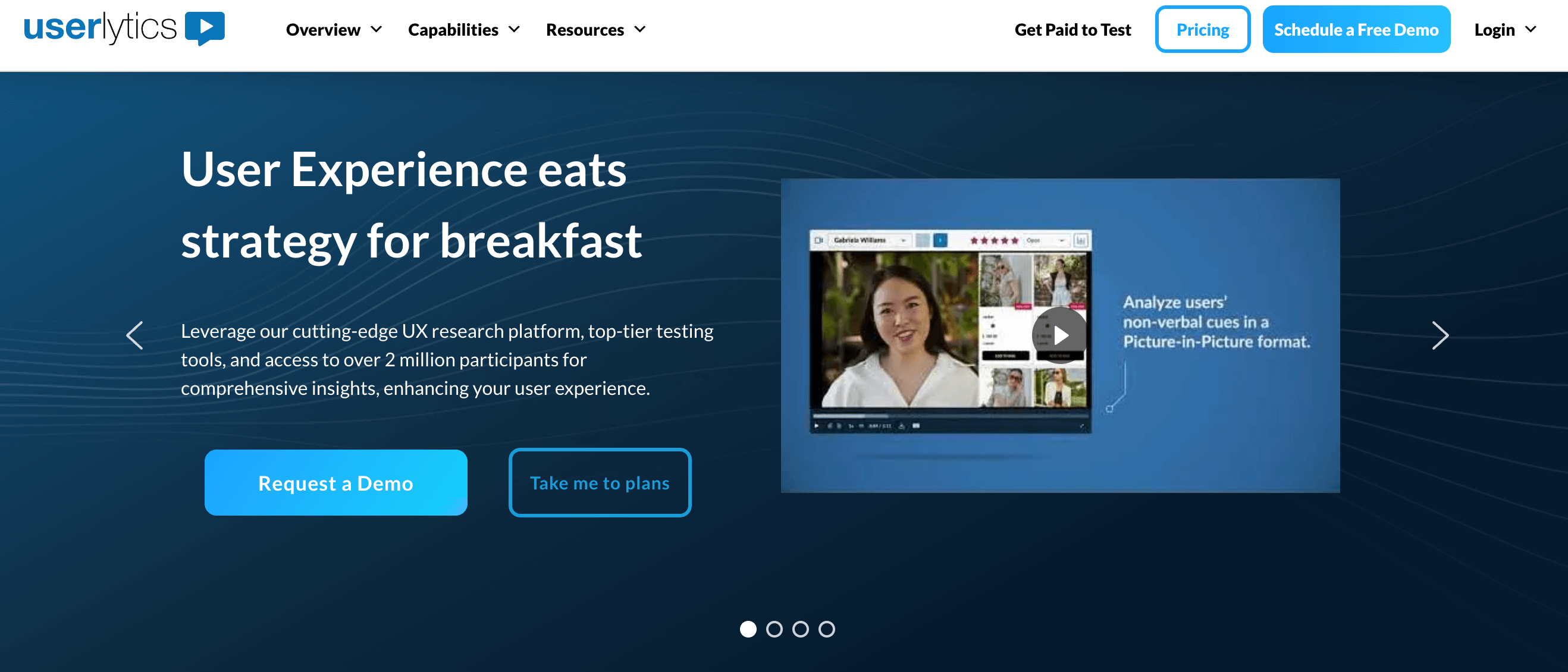
As a result, it can provide insight into how to enhance your product. Also, user feedback can be obtained from targeted demographics or through customized tests.
User review about Userlytics:
“Userlytics help us collect and plan our user research activities in so many ways. This includes anything from moderated to unmoderated user testing to quantitative surveys to feedback analysis.” – Userlytics G2 profile.
Key Integrations: Figma, Adobe, Sketch
Free Version: Not Available
Free Trial: Not Available
Pricing: The pricing of the tool depends on your yearly budget. Kindly connect with their team for more information.
15. Qualaroo
G2 Rating: 4.3 (5)
Suitable for: eCommerce and digital services
Why choose it?
Qualaroo is a user research and feedback tool, now acquired by ProProfs. You can share surveys to collect customer feedback from a designated market. Doing so helps you get a clearer picture of the target market and its constituents.

The tool is simple enough with an easy-to-use interface and offers decent survey capabilities. Therefore, if you are looking for market research tools – that are simple and help you with basic research – then choose Qualaroo.
User review about Qualaroo:
“We can use [Qualaroo] surveys on both [web and app] fronts and collect feedback under one screen. We also run in-app rating prompts to improve our app store ratings.” – Qualaroo G2 profile.
Key Integrations: Salesforce, Intercom, Slack
Free Version: Available
Free Trial: Available
Pricing: It charges $19.99 per month for 100 responses. More details regarding the pricing are available upon request.
16. Buzzsumo
G2 Rating: 4.5 (5)
Suitable for: Digital marketing agencies
Why choose it? You can get in-depth information about content trends and social media engagement.
If you are looking for research tools – specifically for social media – then Buzzsumo is a worthy one. With this tool, you can discover the most shared and engaged content within specific niches/industries.
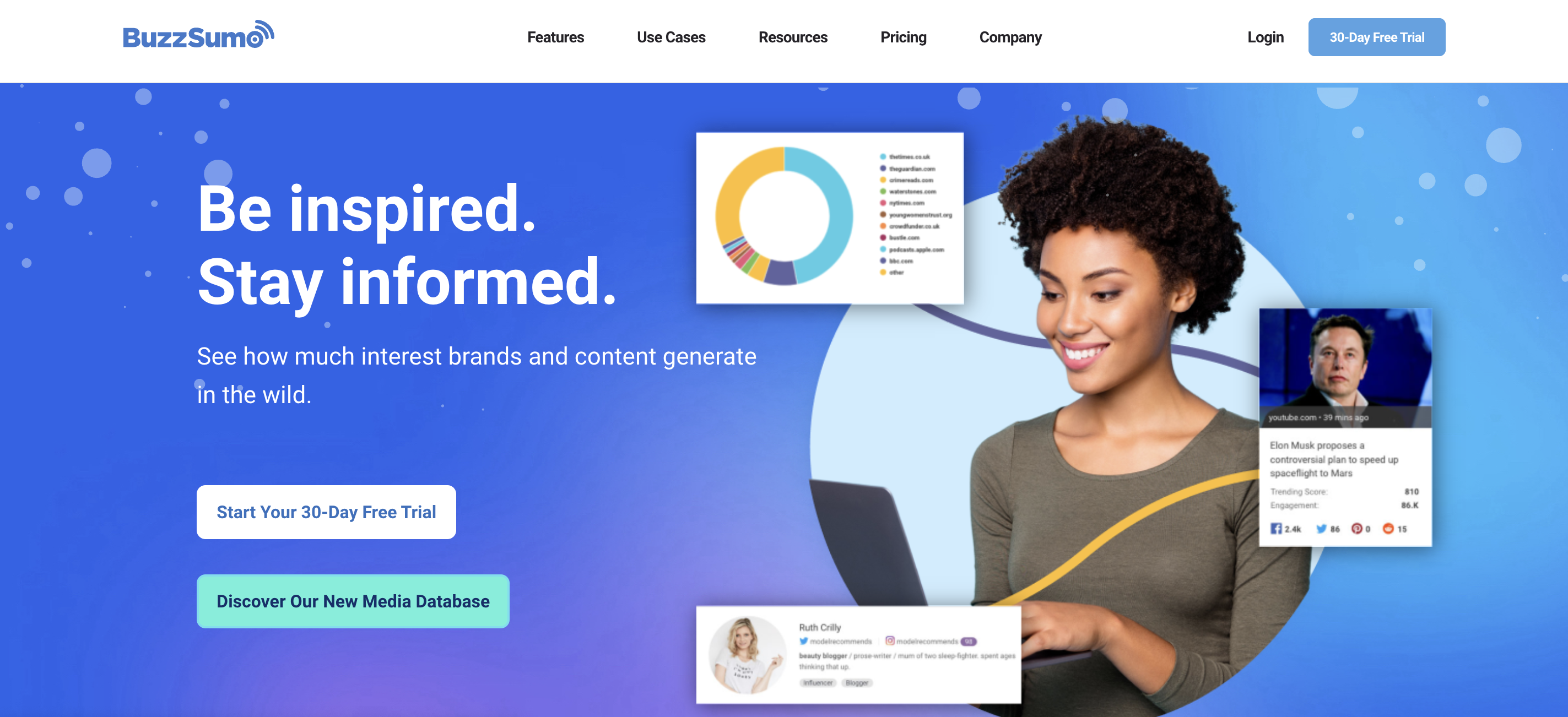
Yes, it might not seem to fit to be on this list of market research tools. However, for those who want to up their digital marketing game – this is perfect.
User review about Buzzsumo:
“It [Buzzsumo] allows us to monitor the brands, competitors, content, keywords, and backlinks, which helps in business.” – Buzzsumo G2 profile.
Key Integrations: Social media platforms, Slack, Klipfolio
Free Version: Not Available
Free Trial: Available
Pricing: The research capability is only available from the “PR & Comms” plan and up. The pricing for this plan is $299 per month for 5 users.

Explore Deeper Customer Insights with SurveySparrow
A personalized walkthrough by our experts. No strings attached!
Bonus Market Research Tools
If you haven’t found what you are looking for in the above list – here are six more bonus market research tools for you.
17. Pollfish
G2 Rating: 4.4 (5)
Suitable for: SMBs and large businesses
Why choose it? It provides more honest customer feedback and reaches a wider audience.
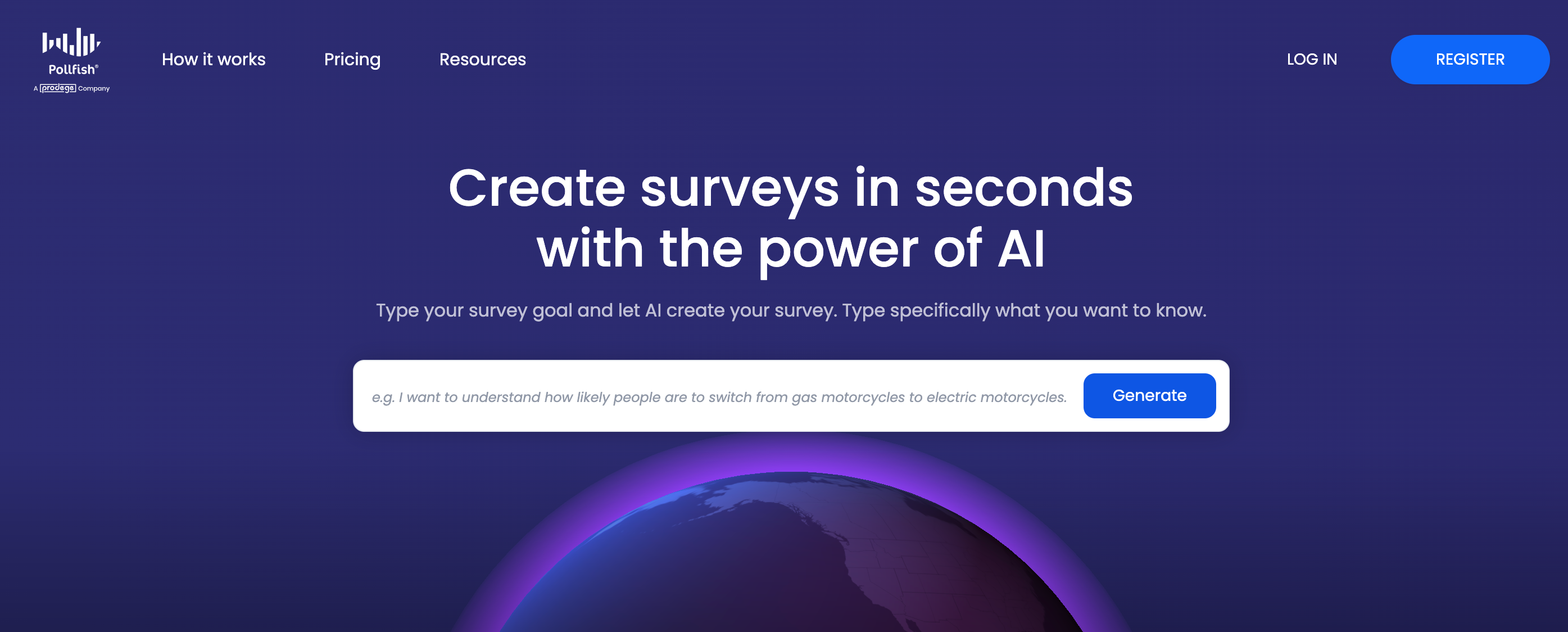
An online survey platform like SurveySparrow – Pollfish can help you reach a global audience through their surveys. It can target specific demographics to provide you with precise market segmentation and consumer insights. The surveys can be further integrated into your app or website for customer analysis.
Key Integrations: Not Available
Free Version: Not Available
Free Trial: Available
Pricing: For 100 responses a month, it charges you $95.
18. Ubersuggest
G2 Rating: 4.2 (5)
Suitable for: Digital marketing agencies and small businesses
Why choose it? Cost-effective tool to getting better online visibility.
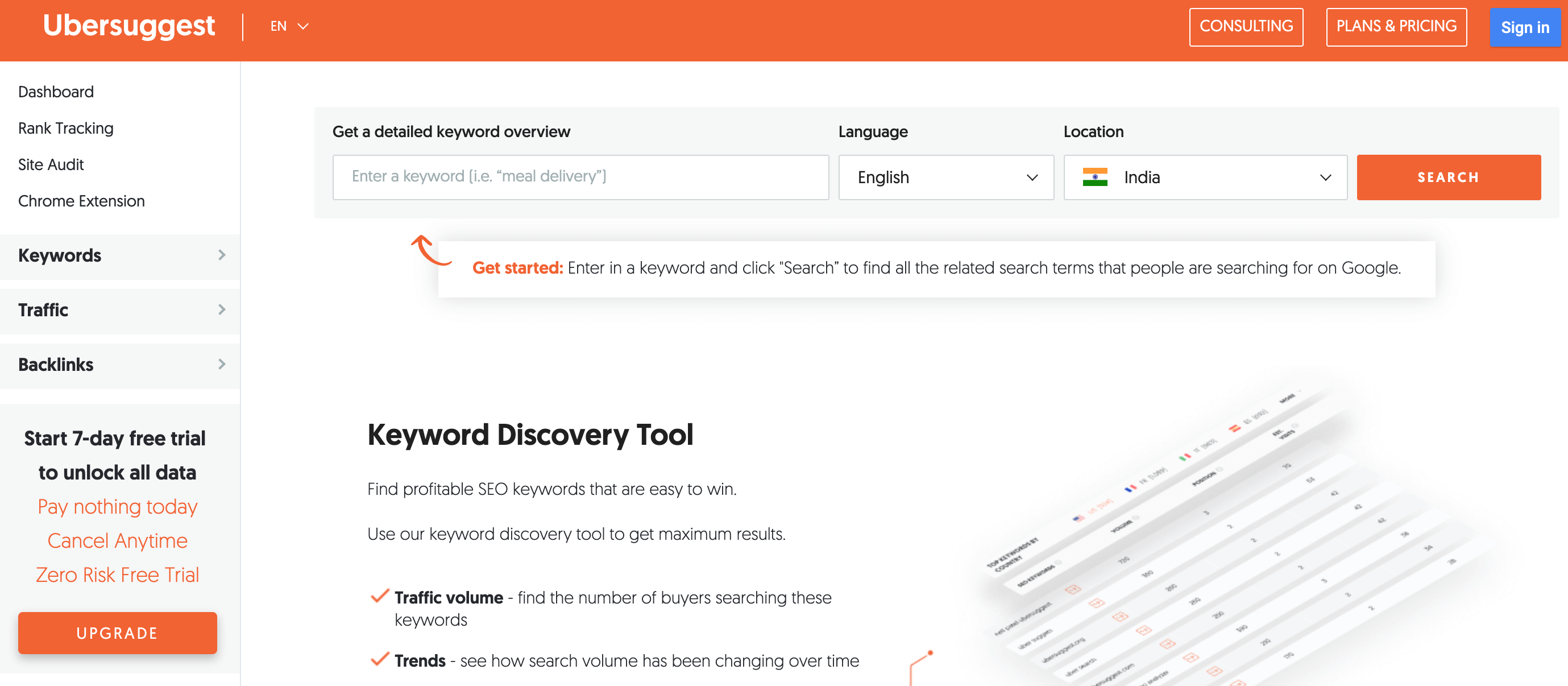
Ubersuggest is an SEO that helps with keyword and competitor research. So, how is it listed under top market research tools? It helps you understand how users are searching for your product, keyword viability, and so on. These are valuable data that you can use to get your product more visible (online) – over competitors.
Key Integrations: Google Analytics, Desktop
Free Version: Available
Free Trial: Available
Pricing: The starting price is very cheap, with just $12 per month.
19. Paperform
G2 Rating: 4.5 (5)
Suitable for: SMBs
Why choose it? Try it for customer feedback and analysis
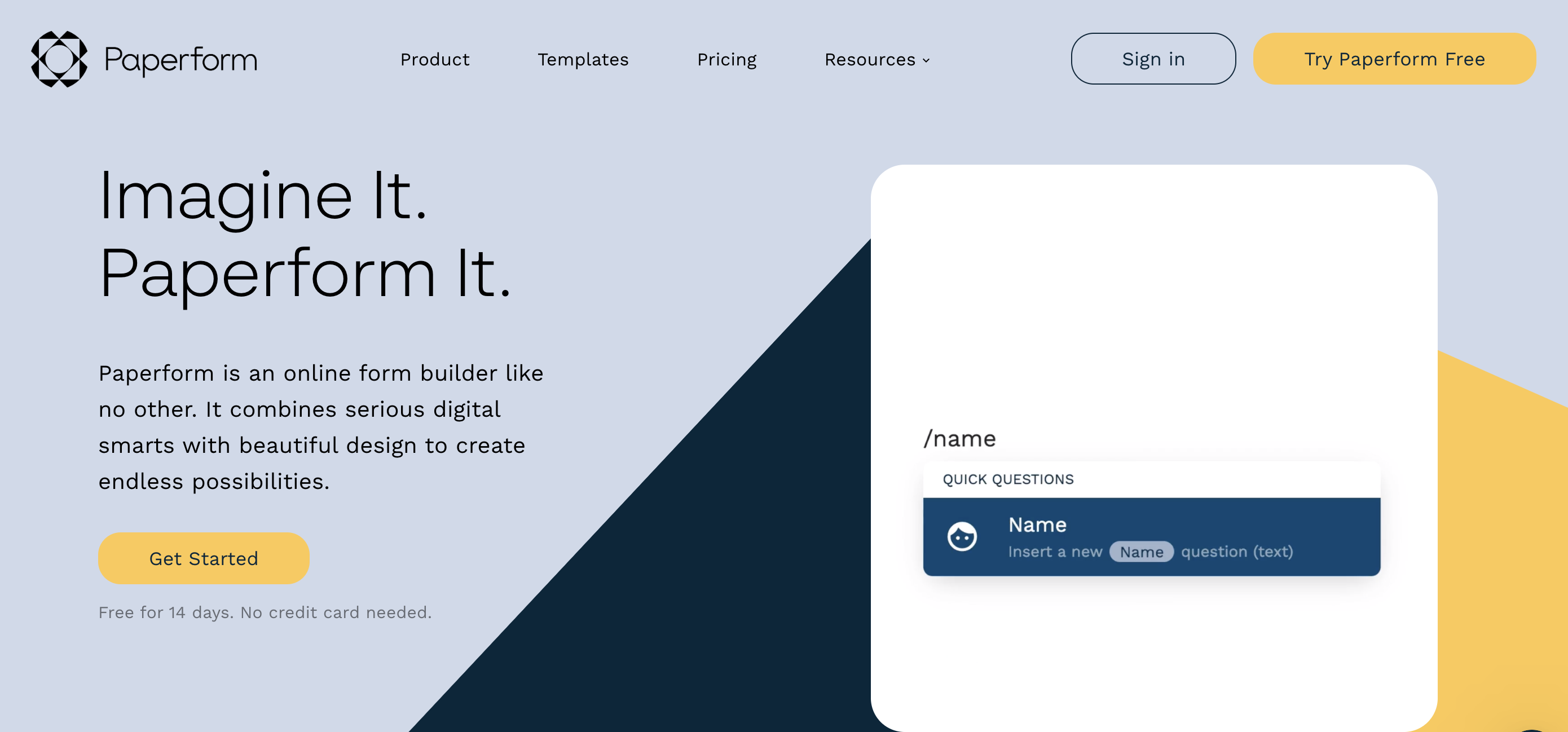
This is an online form builder app that helps you do market research by collecting data through forms. Paperform, like Typeform, offers a range of form types to collect all kinds of (customer) data. The collected data can be analyzed to identify market trends and opportunities.
Key Integrations: Google Sheet, Slack, MailChimp
Free Version: Available
Free Trial: Available
Pricing: The pricing starts from $24 per month for 100 responses when billed annually.
20. Google Trends
G2 Rating: Nil
Suitable for: Startups
Why choose it? Free tool from Google with Google’s data set.
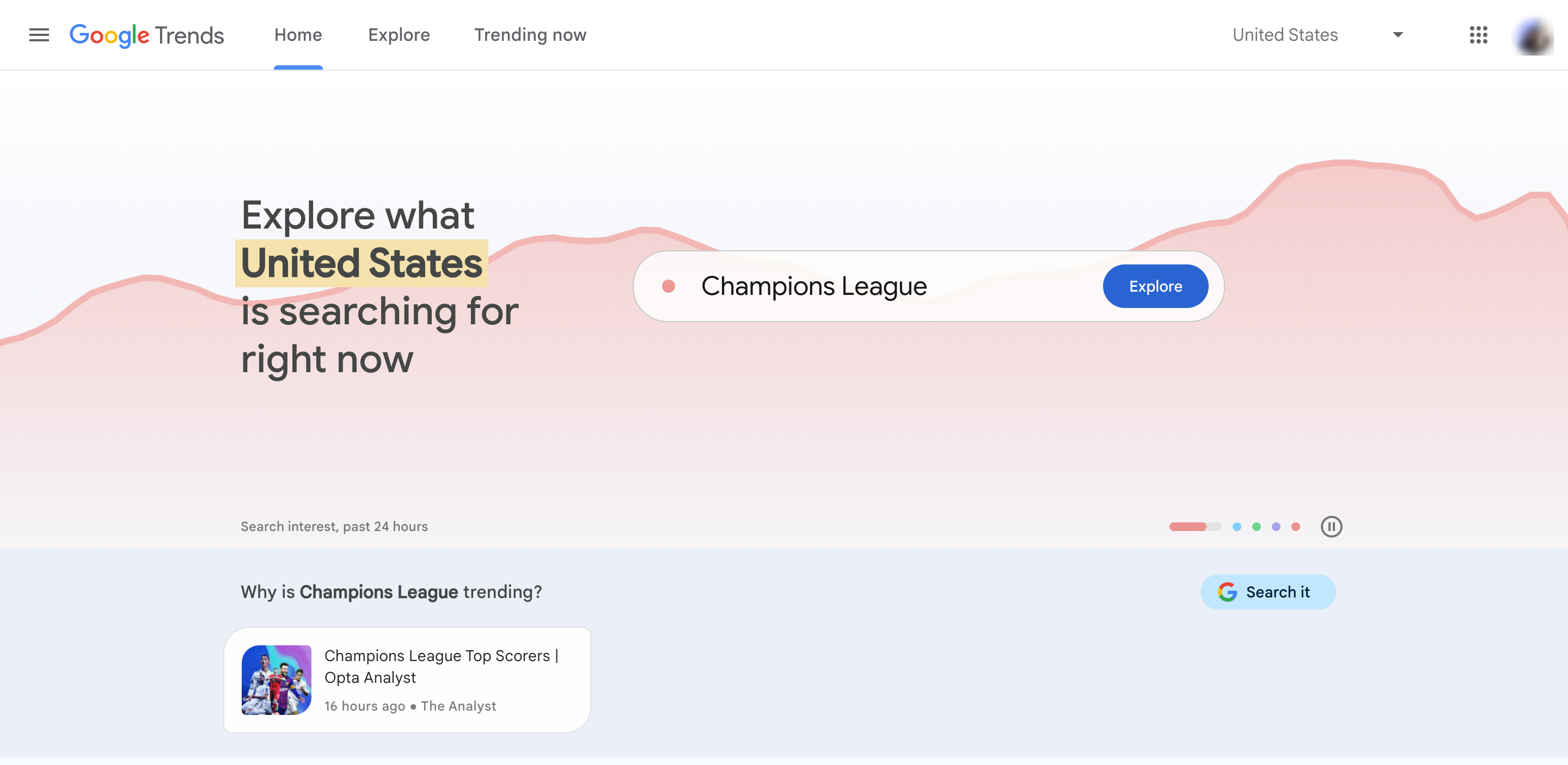
This is another free market research tool you can rely on. It can analyze top search queries across different regions and languages. You can (almost) predict customer behavior (in search) and learn which topics they are interested in.
Key Integrations: Nil
Pricing: Completely free!
21. ThriveCart
G2 Rating: 4.6 (5)
Suitable for: Online retailers
Why choose it? Lifetime access for a one-time payment.

There’s one more market research software that you can add to your armory – ThriveCart. While this tool is an online shopping cart solution, it can also be used to upsell your products and boost click-to-sale conversation rates.
Key Integrations: Stripe, Zapier, Slack
Free Version: Not Available
Free Trial: Not Available
Pricing: The one-time charge for the tool is $495. Since it’s a one-time payment, it’s a cost-effective market research tool for online retailers.
22. NielsenIQ
G2 Rating: Nil
Suitable for: eCommerce and online retailers
Why choose it? It’s one of the top-rated names in consumer market research.
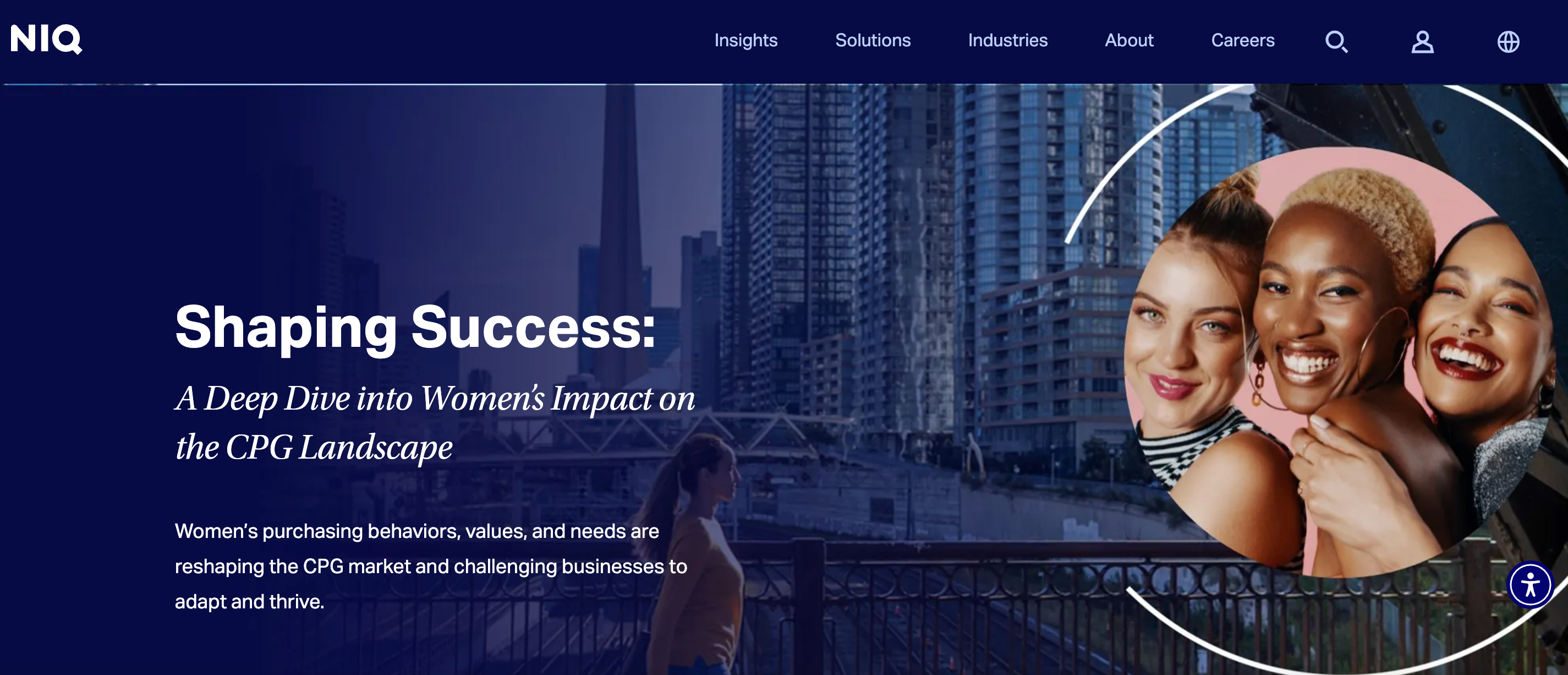
NielsenIQ houses one of the largest databases for consumer buying behavior. If you are looking for market research tools with complete data and insights on consumer shopping – Nielsen is the right choice.
Key Integrations: Not Available
Free Version: Not Available
Free Trial: Not Available
Pricing: Kindly contact their team for details regarding pricing.
KickStart Your Market Research With a Survey Template
Tired of waiting for the right tool? Say no more – here’s a survey template to help you with market research.
Market Research Survey Template
Use This Template
The template is completely free, so if you like, feel free to try it out. You can use it as such or make the necessary changes before launching it. This is not the only research survey template. There’s more of it.
Interested in getting more templates? Visit our survey template page.

Explore Deeper Customer Insights with SurveySparrow
A personalized walkthrough by our experts. No strings attached!
Start 14 Days free trial

Kate Williams
Related Articles

General
Purposive Sampling 101: Definition, Types, And Examples
12 MINUTES
22 January 2022

Startup Journey
SurveySparrow and Zenkit Harmonize to Create a Beautiful Symphony
2 MINUTES
1 September 2019

Employee Experience
Upscaling employee retention via incredible engagement tactics
12 MINUTES
8 October 2021

Knowledge
Kano Model: Decoding Features for Customer Satisfaction
12 MINUTES
28 November 2023
